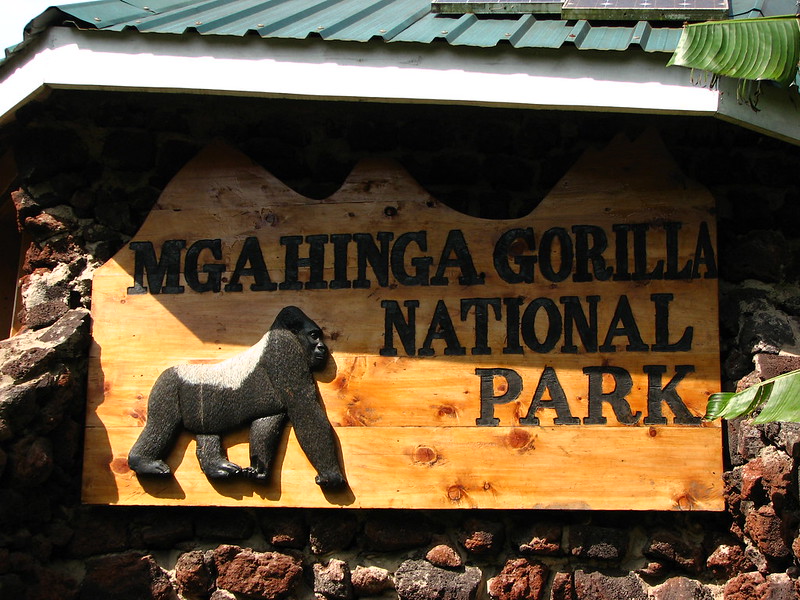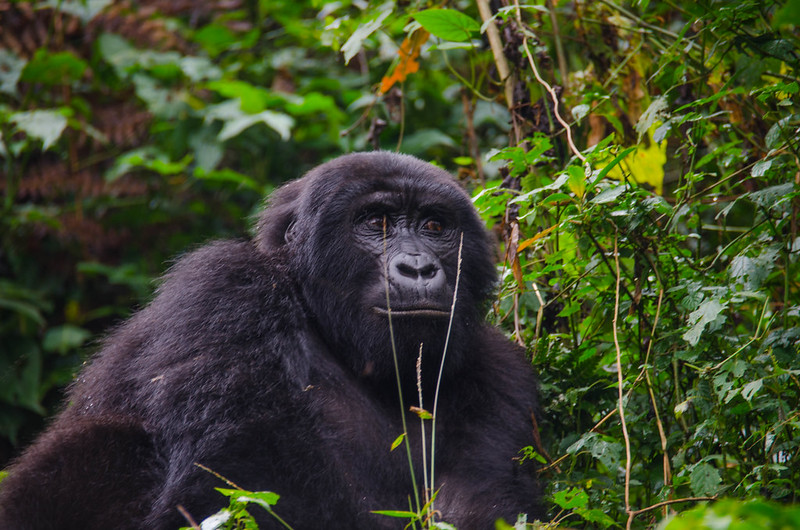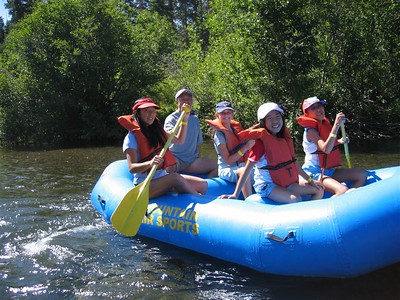Uganda Gorilla Trekking Safari: A Journey Through Bwindi and Mgahinga.
As the “Pearl of Africa,” Uganda is a paradise for ecotourists and animal watchers. An exciting gorilla trekking safari in Uganda puts you in the presence of the endangered mountain gorillas, which is a major draw for tourists. Of the three nations where these magnificent animals are found, more over half call Uganda home.
This once-in-a-lifetime journey may be enjoyed in two distinct locations: Bwindi Impenetrable National Park and Mgahinga Gorilla National Park. Let’s explore these two famous parks and see for yourself why they are the best places to go gorilla trekking.
Bwindi Impenetrable National Park, Home to half the world’s remaining Mountain Gorillas.
Among the world’s most renowned gorilla trekking locations is Bwindi Impenetrable National Park. Situated in the southwestern region of Uganda, this World Heritage Site encompasses 331 square kilometers of verdant rainforest. The Bwindi Impenetrable National area is the most populous gorilla sanctuary in Africa, with an estimated population of 450 mountain gorillas. The area is well-known for its diverse wildlife and rough landscape.
Exploring the Wilds of Bwindi with Gorillas Through a Variety of Environments and Difficult Terrains: True to its name, trekking in Bwindi National Park is an exciting journey. The steep slopes and dense forest canopy provide a beautiful and challenging landscape. Depending on your physical level and the location of the gorilla families, treks may last anywhere from two to eight hours.
Buhoma, Ruhija, Rushaga, and Nkuringo are the four hiking sectors in Bwindi that visitors may explore. Trekking in each region is different, so tourists may pick and choose what they want. As an example, Buhoma is the most well-known and long-standing sector, but Nkuringo is renowned for its less travelled and more difficult paths.
There are about twenty habituated gorilla families in Bwindi, meaning they are used to human presence. Various parts of the park are home to these families, and each one gets a modest number of visitors daily. Mubare, Rushegura, and Bitukura are just a few of the well-known families.
Gorilla Trekking is Just Part of What Bwindi Offers. There are many more things to do in the park that will let you experience the local culture and nature to the fullest:
In Bwindi, you may see more than 350 different bird species, including 23 that are unique to the Albertine Rift, such as the African green broadbill. This makes it a fantastic destination for birdwatchers.
Hikes & Nature Walks, Bwindi’s forest is home to several hiking paths that may take you to beautiful waterfalls, rivers, and vantage spots.
Community excursions also provide an opportunity for tourists to meet the indigenous Batwa pygmy people and get insight into their culture, customs, and relationship with the forest.
Mgahinga Gorilla National Park
Although many people begin their gorilla trekking journey in Bwindi, a less touristy option is Mgahinga Gorilla National Park. The Virunga Mountains range, which includes Mgahinga in its southwesternmost corner, extends over the Democratic Republic of the Congo, Rwanda, and Uganda. Even though it only spans 34 square kilometers, the park is just as beautiful and home to a wide variety of animals as Bwindi.

Trekking with Gorillas in Mgahinga: Less Crowds, More Personal Experiences: There is only one habituated gorilla family in Mgahinga, and their name is the Nyakagezi. Although this family often visits Rwanda and the DRC, they have been hiking in Uganda for a while now since they have stayed put. Because of the daily cap on visitors, gorilla experiences at Mgahinga are more personal and smaller groups.
Trekking in Mgahinga provides a whole new experience compared to Bwindi, with its spectacular views and picturesque treks. The breathtaking panoramas of the mountain ranges, valleys, and foggy woodlands are a result of the park’s setting among the Virunga Volcanoes.
Due to the less dense forest, the actual journey is often easier than in Bwindi, but the sights are just as spectacular.
At Mgahinga, you may enjoy gorilla trekking and a host of other exciting activities.
Mgahinga is also a good place to undertake golden monkey tracking since the area is home to these endangered primates. For a novel and exciting take on wildlife viewing, guests may follow these active monkeys as they forage in the bamboo woods.
As a dormant volcano, Mount Sabyinyo, Mount Gahinga, and Mount Muhabura are all within hiking distance from the park, which is located in the Virunga massif. On these treks, you may see the DRC, Rwanda, and Uganda all at once, and you can take in the stunning scenery along the way.
Like Bwindi, Mgahinga is a stop on the Batwa Cultural Trail, which allows visitors to interact with indigenous Batwa people. Along the Batwa Cultural Trail, tourists may learn about the Batwa people’s history, customs, and wilderness survival skills while they hike through the forest with native Batwa guides.
Which Park Is Better, Bwindi or Mgahinga?
When it comes to gorilla trekking, Bwindi and Mgahinga are two of the best options, but each has its own special charm. Their comparison is as follows.
There are more habituated gorilla families in Bwindi Impenetrable National Park, which means more trekking sectors, more permit availability, and a larger gorilla population overall.
Bwindi is a multi-faceted attraction that offers gorilla trekking, cultural interactions, a plethora of birds, and a maze of pathways.
More Difficult Terrain, Bwindi’s harsh terrain offers a challenging hike through thick jungle for those who are up for it.
Less Public, If you like your gorilla trekking experience in peace and quiet, Mgahinga is the place for you since it has less tourists.
Golden Monkey Tracking, Mgahinga is the perfect spot to watch mountain gorillas and golden monkeys.
Hikes on Volcanoes, For the daredevil safariker, nothing beats the opportunity to climb atop a volcano while taking in breathtaking panoramic vistas.
When to Visit Bwindi and Mgahinga National Parks
The dry seasons in Uganda, which go from June to August and December to February, are ideal for gorilla trekking in Bwindi and Mgahinga. There being less precipitation, the routes are dryer, and visibility is higher during these months, making them ideal for hiking.
While gorilla trekking is an option at any time of year, the rainy seasons (March–May and September–November) provide unique benefits, such less people and verdant scenery. If you are planning to come during these months, be ready for routes that are muddy and make sure to carry waterproof clothes.
Experience the wonders of Uganda like never before on a gorilla trekking safari, whether you want to explore the lush Bwindi forest or the breathtaking Mgahinga volcanic environment.
The treks in Bwindi and Mgahinga are quite different from one another; the former presents the difficulty of traversing dense jungles, while the latter provides breathtaking mountain vistas and a more remote setting. Seeing mountain gorillas in their natural habitat is an unforgettable, life-altering experience, regardless of the park you visit.




